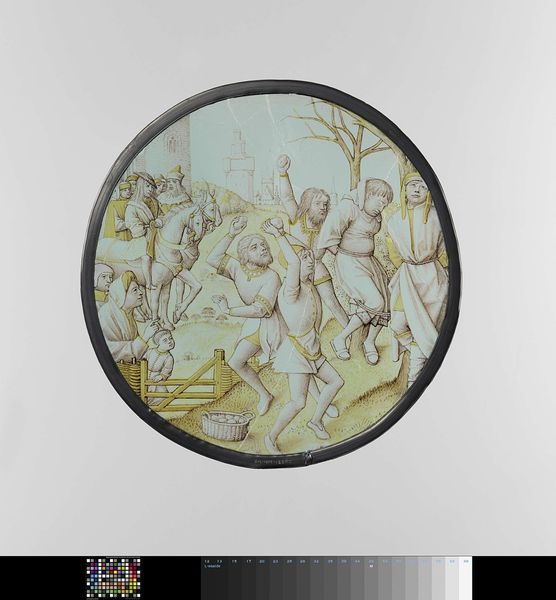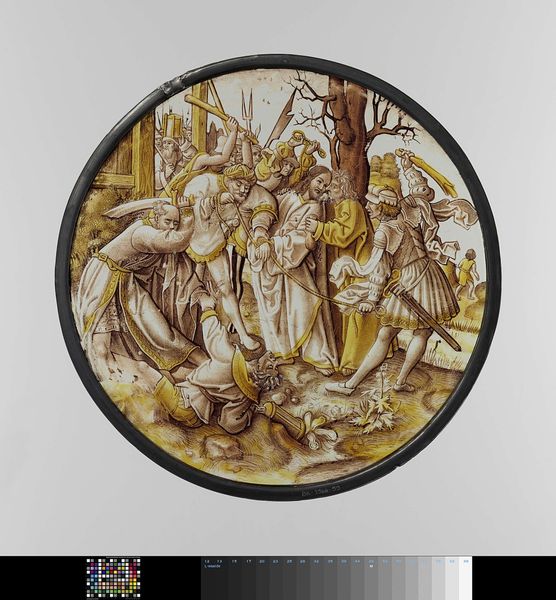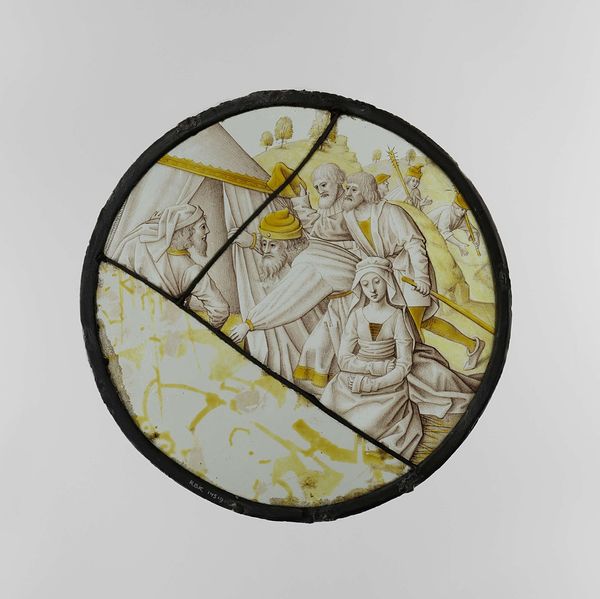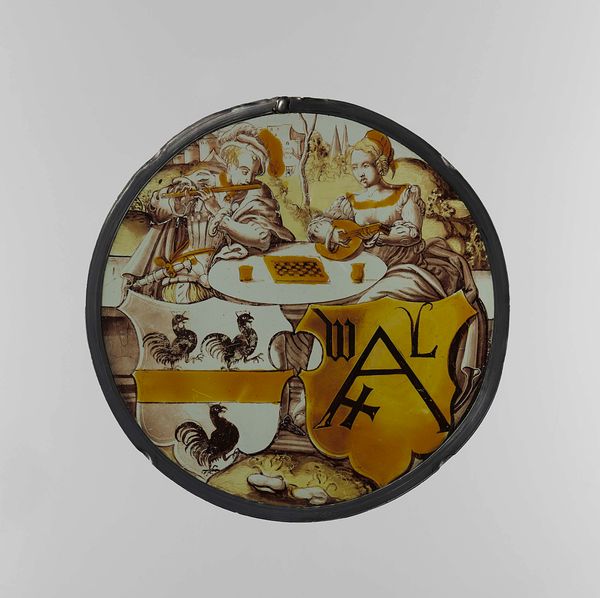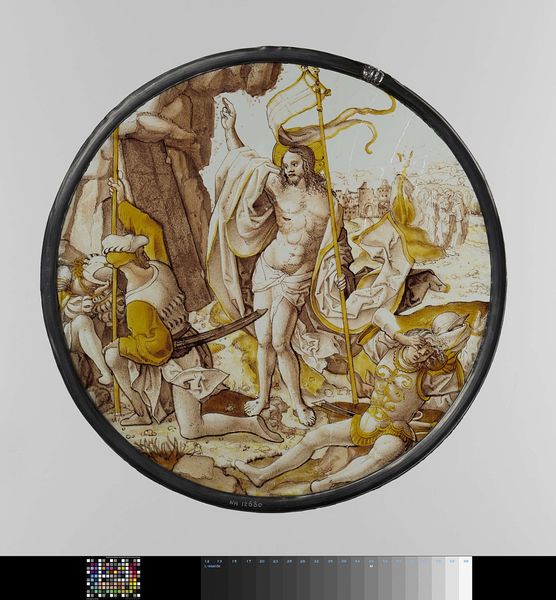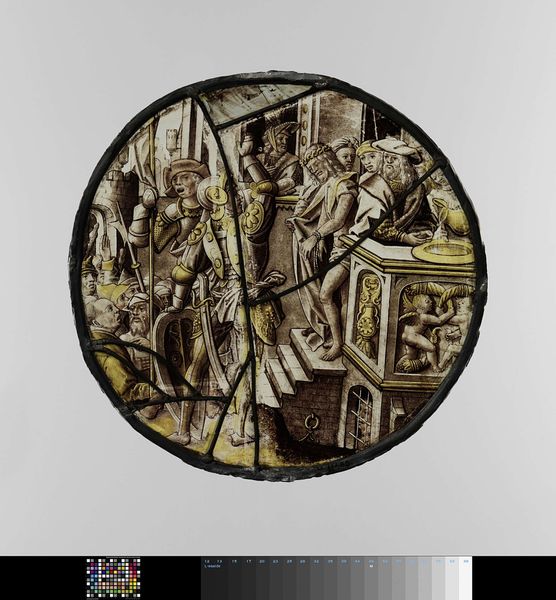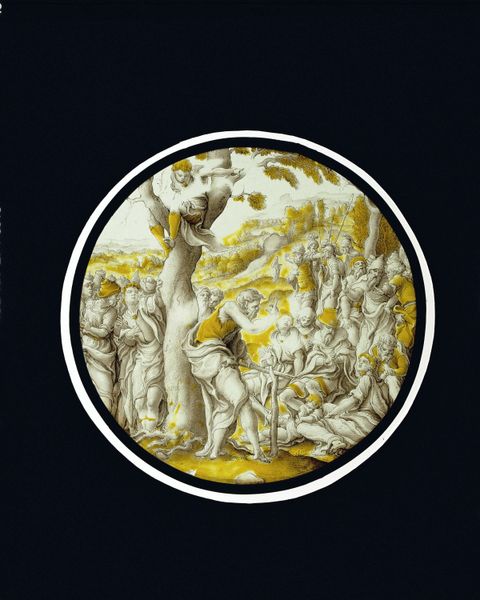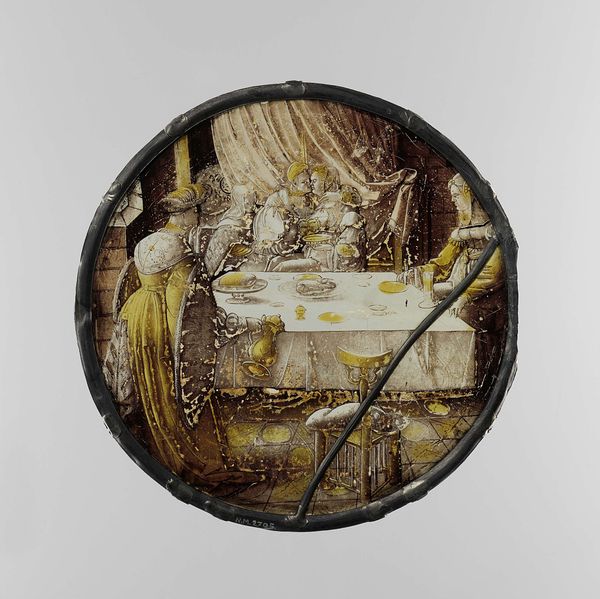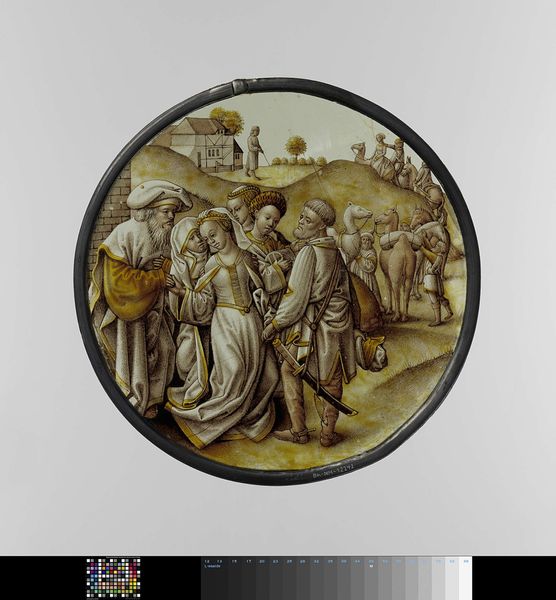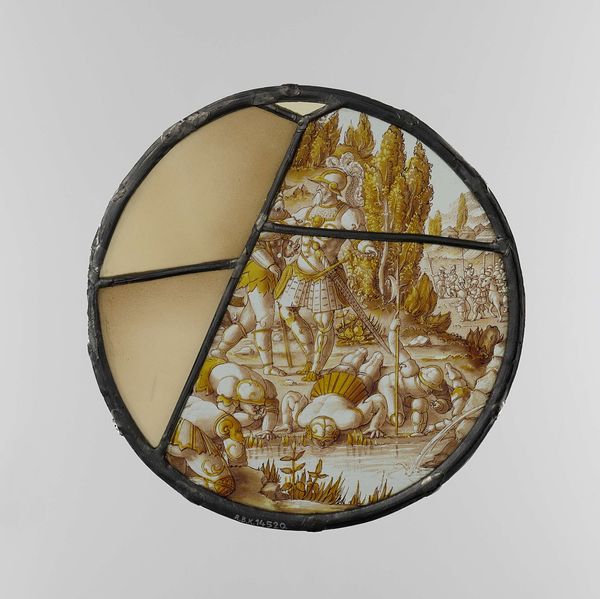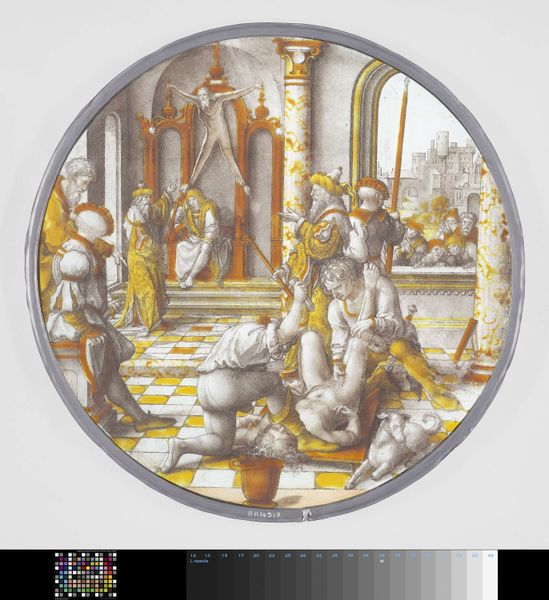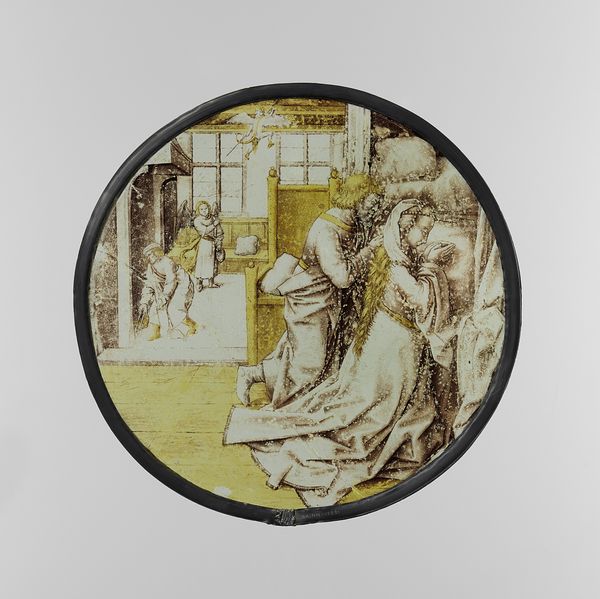
drawing, ink
#
drawing
#
narrative-art
#
figuration
#
ink
#
history-painting
#
northern-renaissance
#
decorative art
#
realism
Copyright: Rijks Museum: Open Domain
Curator: Let's focus now on "The Crowning with Thorns," an ink drawing made around 1515-1520. It’s currently held here at the Rijksmuseum. Editor: The first impression is quite striking, though somber. The scene, framed within this circle, feels claustrophobic, filled with figures pressing in. The restricted color palette adds to the sense of restraint, almost muted anguish. Curator: It depicts, of course, a key scene from the Passion of Christ. The crowning with thorns is about humiliation, suffering… a stark intersection of power and vulnerability, echoing through millennia. That circle itself hints at cycles of cruelty embedded in our narratives. Editor: Agreed. I see how the composition amplifies that reading. Note the central placement of Christ, seated but completely surrounded, a point of stillness amid chaos. The sharp lines of the figures create visual tension. Semiotically, it’s brilliant: dark and light emphasizing the conflict. Curator: And those tormentors, rendered with such detail. Look closely – the faces aren't generic. These are individuals caught up in something larger, their expressions conveying not just malice but something akin to fear or grim satisfaction. Think of it as a symbolic portrayal of human complicity. Editor: Interesting point about complicity. The realism pushes it beyond mere allegory. It implicates the viewer, even now. I’m captivated by the rendering of fabric; notice how it drapes and folds—volume implied through expert strokes. What is its cultural placement in early 16th century European history? Curator: Art historians consider this piece representative of the Northern Renaissance style where detailed realism meets potent narrative. Its origins in the early 16th-century Netherlands situate it in a nexus of religious and societal upheaval; its themes would strongly resonate within the local iconography of Christian torment. Editor: That adds another layer. Knowing the religious undercurrent enriches our understanding of its formal qualities. Curator: Precisely. A single piece of art speaks so much when we know the history. Editor: Seeing and knowing. That’s what it’s all about, isn't it?
Comments
No comments
Be the first to comment and join the conversation on the ultimate creative platform.
